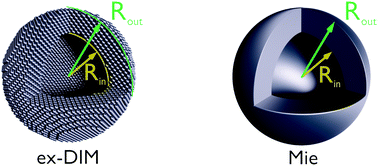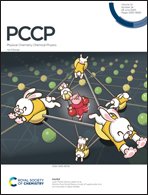Plasmonic nano-shells: atomistic discrete interaction versus classic electrodynamics models
Abstract
Using the extended discrete interaction model and Mie theory, we investigate the tunability of the optical polarizability of small metallic nano-shells. We show that the spectral positions of symmetric and antisymmetric dipolar plasmon resonances vary with the ratio of particle radius to hole radius in a manner similar to one predicted for uniform metallic nano-shells using a semiclassical approach of two coupled harmonic oscillators. We show that, according to the extended discrete interaction model, the dipolar plasmon resonances are also present for nano-shells in the 2–13 nm size region and show the same functional dependence seen for larger nano-shells. Using previously fitted data from experiment, we can predict the size-dependence of the plasma frequency for nano-shells in the 1–15 nm size region. We find that Mie theory, which utilizes the electron mean free path correction for the permittivity, is not able to reproduce the same functional form of the dipolar modes for the nano-shells of the same sizes.

- This article is part of the themed collection: 2020 PCCP HOT Articles


 Please wait while we load your content...
Please wait while we load your content...